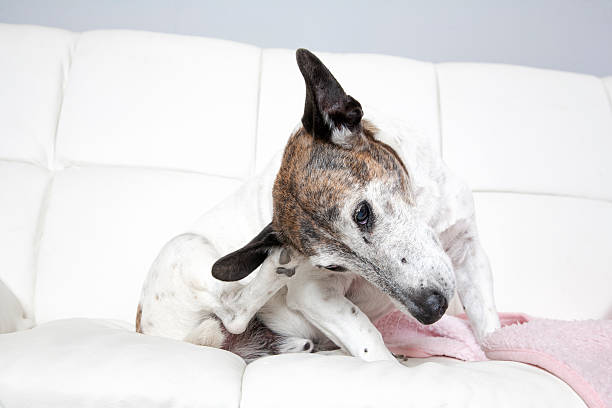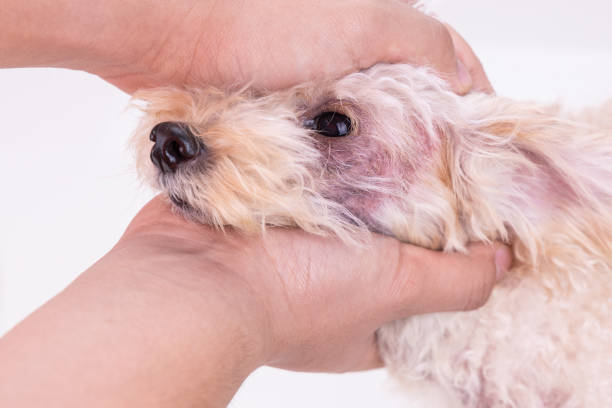Cruciate ligaments often play a role in instances of weakness in the back legs. This can significantly incapacitate an animal that relies on its hind legs for movement. Here, we delve into some aspects that could help you identify a diagnosis, comprehend different treatment options, and more.
What are the Cruciate Ligaments?
The dog’s knee comprises three bones: the femur, tibia, and patella. The area where these three bones meet is called the “stifle”. Each stifle has an inner or “medial” aspect and an outer or “lateral” part. The medial aspect is called the femorotibial (or “femur-tibia”) joint. This is where the cruciate ligaments are located, and they help stabilize this part of the knee.


What is Cruciate Ligament Disease?
The term for the condition caused by damage to the cruciate ligaments is called “cruciate disease.” It can occur in dogs, cats, and horses. Cruciate disease is one of the dogs’ most common causes of rear leg lameness. The damage to the ligament can be partial or complete. Still, either way, there will always be some degree of instability within the stifle joint.
Since the stifle is a complex joint, having an unstable femorotibial joint affects more than just how well your pet can walk. If left untreated, cruciate ligament disease will result in chronic pain and arthritis as the damage continues to occur within the joint.
What Causes Cruciate Ligament Disease?
A traumatic injury or acute injury can cause cruciate ligament disease. A traumatic injury or acute injury can cause cruciate ligament disease. Still, in most cases, it results from a longer-term process known as “osteoarthritis”, which is when cartilage starts to break down within the joint.
The most common cause of osteoarthritis in dogs is a degenerative joint disease (DJD). This hereditary condition can affect any breed. In these cases, there isn’t an actual “injury” to the ligaments themselves. The ligaments have been stressed if the joints have been compromised from a young age because of DJD. This increases the risk of them being damaged.
Cruciate ligament disease can also be caused by obesity or other conditions that cause excessive strain on the ligaments within the joint. It is important to note that even if your pet loses weight after cruciate ligament surgery, it can take a long to strengthen and repair the ligaments.
What are the Clinical Signs of Cruciate Disease?
Many dogs will show subtle changes in gait at first due to the damage to the tissue surrounding the stifle. They may hold their back legs up for a few seconds or walk more stiffly. Over time, the ligaments continue to stretch and tear until even walking becomes difficult.
Once clinical signs start to appear, it is often due to significant damage to the ligament. At this point, there might be a noticeable “wobble” or “give” within the stifle when your pet walks. Continued stretching can cause the ligament to detach from the tibial spine, which causes severe instability within the joint. This usually results in one of two scenarios:
Your pet will be unable to put any weight on their leg at all, or they may bear some weight but show significant signs of pain.


What are the Options for Treatment and Recovery?
Many pets with the cruciate disease will benefit from surgery. Still, it is essential to note that this doesn’t mean your pet will jump around like a puppy again. Your dog may still have some degree of pain and arthritis within the joint following surgery.
The most common surgical procedure for treating cruciate disease is a “TPLO” (pronounced TEE-poh). It involves removing the damaged ligament and fixing the femorotibial joint with a plate and screws.
Ligaments are tissues that connect bones to other bones and provide stability within joints by preventing excessive movement between bones.
The cruciate ligament is the most common cause of rear leg lameness in dogs, and it’s usually caused by damage to the tissue. Left untreated can lead to chronic pain and arthritis within the stifle.


Tips for Preventing Cruciate Ligament Injuries in Your Dog
There are many ways to prevent Cruciate Ligament Injury in your dog. One of the most important things you can exercise your dog regularly and play a lot with them. You should also be extra careful when walking on slippery surfaces or letting your dog near stairs because these can be dangerous for their joints. Finally, you should avoid jumping from elevated heights with your dog, which could damage their ligaments.
Conclusion
In this article, we’ve covered the symptoms and treatment options for cruciate ligament disease. In most cases of Cruciate Ligament Disease in dogs, surgery is an excellent option to relieve pain and restore function within the joint. You must keep your dog from jumping around too much following their surgery because it can take a long time for them to heal!
Dogs with cruciate ligament disease usually show signs of pain and stiffness in their stifles. Still, the most common cause is arthritis. The TPLO procedure can repair a ruptured or damaged cruciate ligament. Still, it doesn’t always guarantee that your pet will return to normal after surgery. Regardless of whether you opt for surgical treatment or not, there are many things you can do to help prevent injury from happening again!


